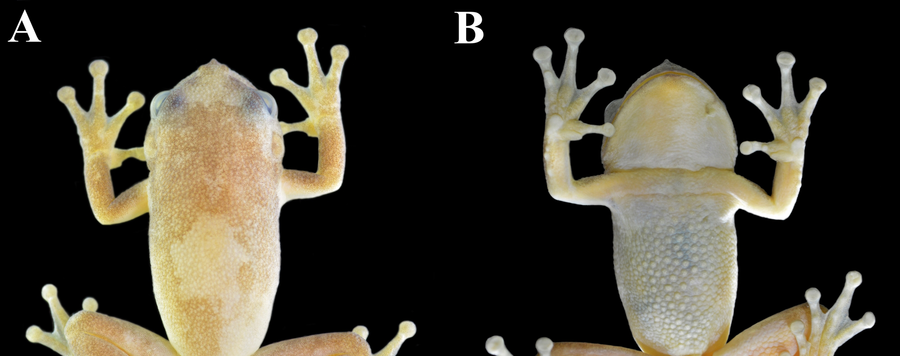
A new large canopy-dwelling species of Phyllodytes Wagler, 1930 (Anura, Hylidae) from Northeastern Brazil
The known diversity of treefrogs of the genus Phyllodytes has rapidly increased in recent years, currently comprising 14 species. Recent field work in the Atlantic Rainforest of the state of Bahia lead to the discovery of a new large species of Phyllodytes which is herein described based on multiple evidence including morphological, acoustical and genetic data. Phyllodytes sp. nov. is one of the largest species within the genus and presents immaculate yellowish dorsum and limbs. The advertisement call of the species is composed of 7–31 notes (half pulsed/pulsatile-half harmonic) with frequency-modulated harmonics. Phyllodytes sp. nov. has a karyotype of 2n = 22 chromosomes, as also found in other species of the genus. Genetic distance values of the 16S mitochondrial rRNA among Phyllodytes sp. nov. and its congeners range between 6.4 to 10.2%. The description of another new species for this state reinforces the need for further taxonomic work with Phyllodytes in this region that has been revealed as a priority area for research and conservation of this genus.






